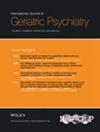An International Validation of the Stigma Impact Scale With People With Dementia
Abstract
Objective
A robust psychometric instrument is imperative to measure the devastating impact of self-stigma in dementia to adequately inform policy and practice. Our objective was to evaluate the psychometric properties of the Stigma Impact Scale in a global sample of people with dementia.
Method
Data were analysed from the World Alzheimer Report including 710 participants in 42 countries who completed the SIS. Detailed psychometric analyses of the SIS included estimating reliability, convergent validity with the Warwick-Edinburgh mental Well-being Scale (WEMWBS) and the Dementia Quality of Life instrument (DQoL), the factor structure of the measure (through both exploratory and confirmatory factor analysis).
Results
The SIS and its subscales had ‘good’ to ‘excellent’ internal consistency (Cronbach's Alpha: 0.883–0.943). However, convergent validity correlations were not in the predicted direction; no significant correlations were noted between the SIS and the WEMWBS and DQoL. Factor analysis suggested marginal improvements in global fit indices for the observed model compared to the theoretical model, though none met the thresholds for acceptable fit. The final proposed model had three factors: rejection and secrecy, loneliness and belonging and perceived social isolation. Most SIS items were strongly endorsed by participants.
Conclusion
The SIS is the most robustly tested instrument measuring self-stigma in dementia. The SIS has good to excellent reliability and relevance to the target population, however future work is required to improve the factor structure of the scale. Further the results of the validity testing pose a number of theoretical and empirical questions for future research.

 求助内容:
求助内容: 应助结果提醒方式:
应助结果提醒方式:


